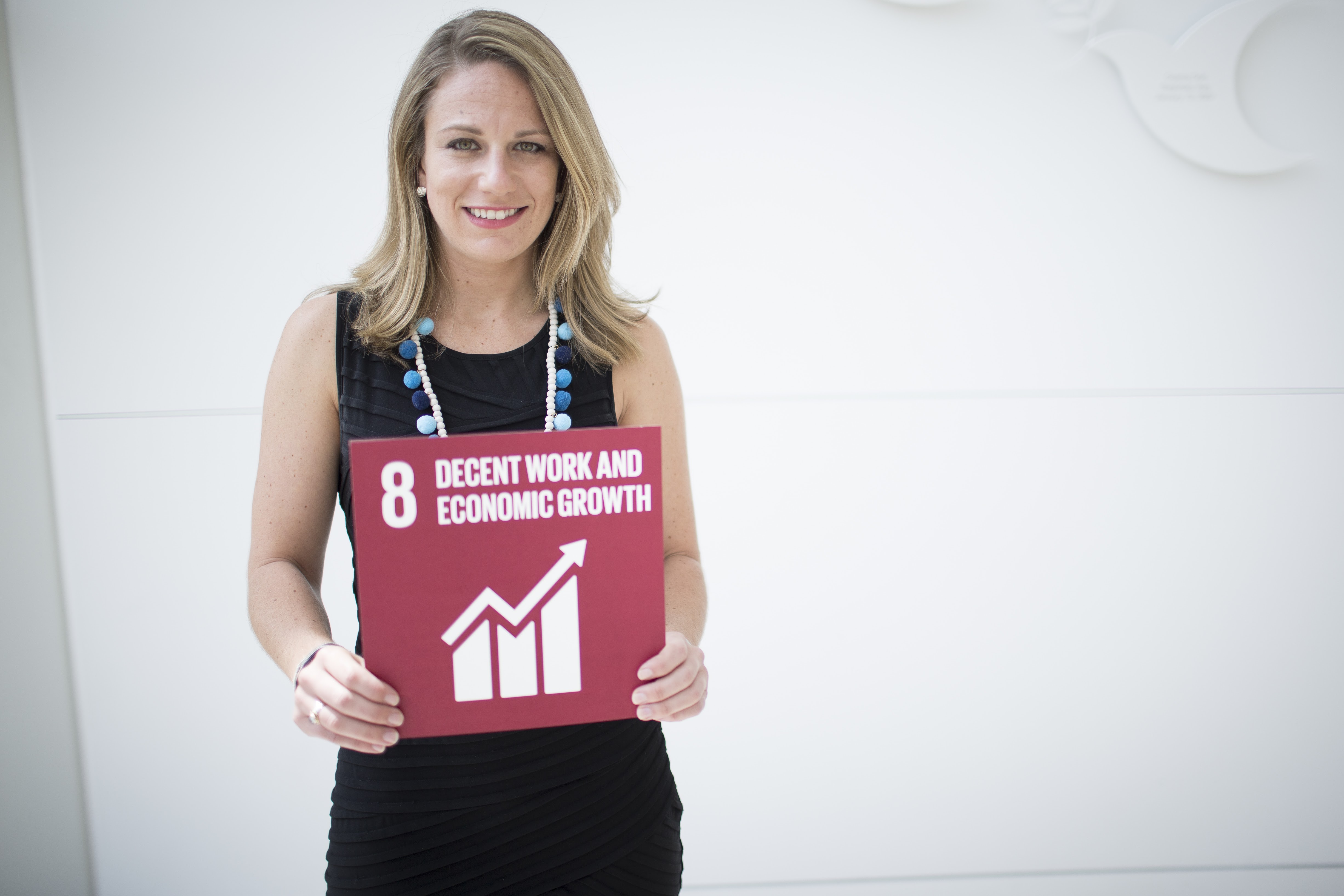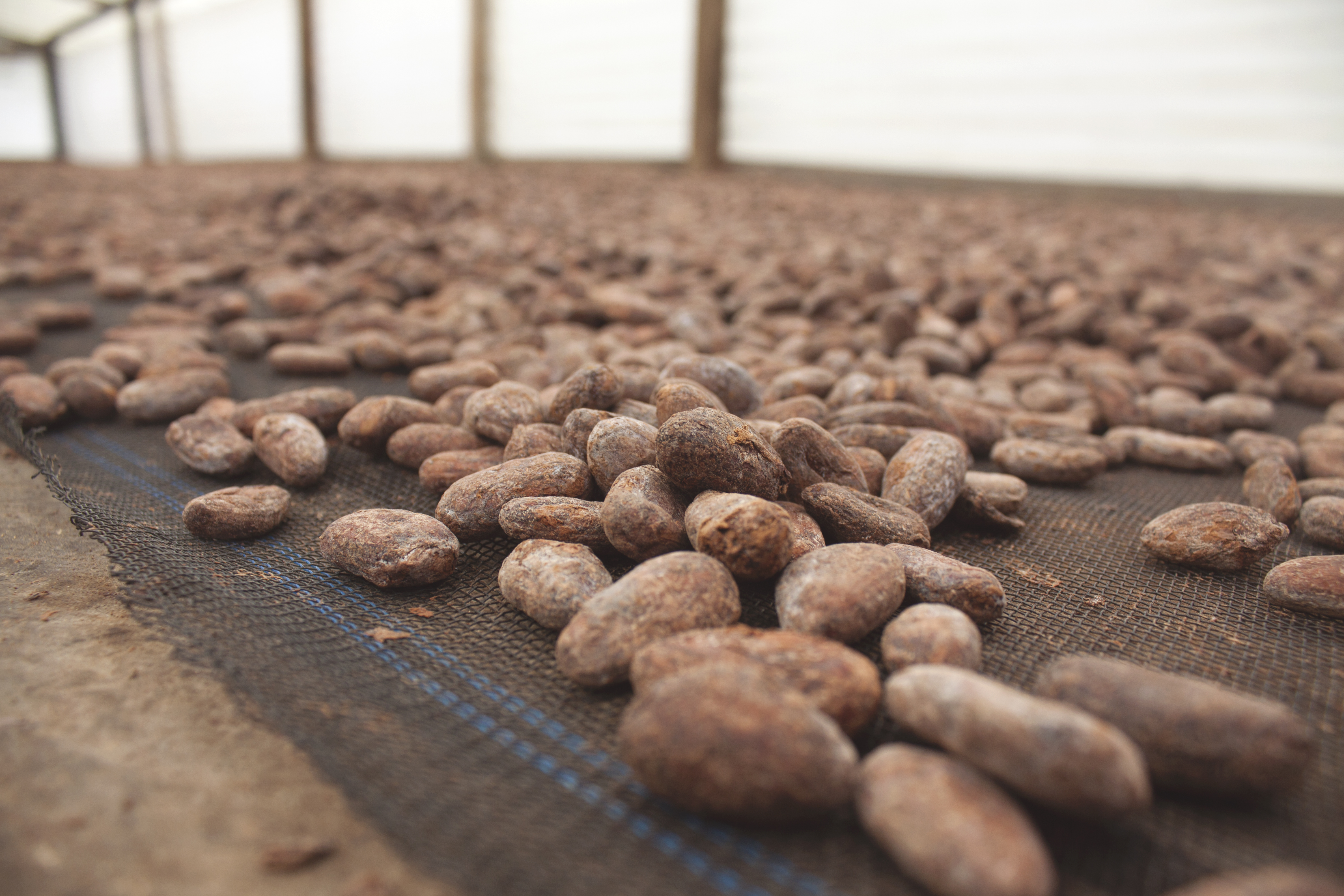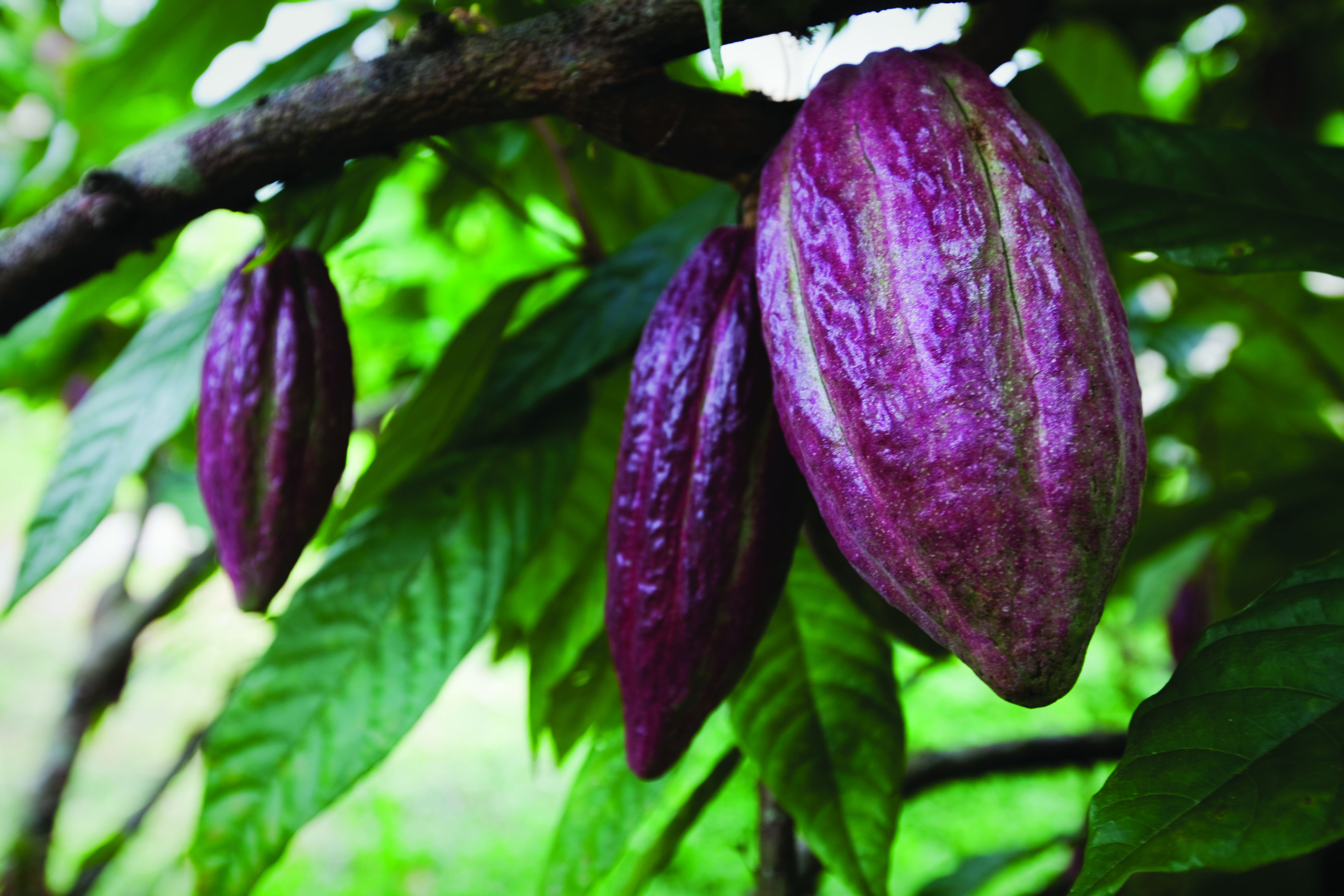Chocolate may be one of the world’s most beloved products, yet consumers remain largely unaware of the tortuous path it travels to move from origin to supermarket, shedding value along the way. Ninety percent of the world’s cacao is farmed by about six million families on less than five hectares of land. Despite farming one of the world’s most-demanded ingredients, 90 percent of these families live on less than $2 a day.
Emily Stone co-founded Uncommon Cacao to build a scalable alternative to the commodity trading of cocoa beans. By connecting farmers with chocolate manufacturers and facilitating transparent, direct trade, Uncommon Cacao is leading the charge to build an industry that drives maximum value to farmers and creates meaningful impact for communities and ecosystems at origin.
 Photo courtesy of Chet Strange.
Photo courtesy of Chet Strange.
Read the full Q&A below:
What do people get wrong about chocolate?
ES: Chocolate is deeply misunderstood. Most consumers probably think chocolate just comes from the supermarket. It is a tropical fruit, so it’s actually a tree. Chocolate and cacao, which is the raw material for chocolate, grows on tropical fruit trees in these amazing fruits that look like Nerf footballs. They’re bright orange and purple. You crack them open and there’s this white, fluffy fruit inside that tastes like mango and then inside of those are these little purple seeds, and those are cocoa beans.
Cocoa beans need to be fermented before they can be turned into chocolate. That’s what my company does. We do a lot of fermentation and drying. We actually help to accelerate the quality process, from the fruit all the way through to the manufacturer, we do rigorous quality-control trainings and evaluations throughout our supply chain. That said, all of that is sort of completely unknown to the consumer at this point.
At what point did you realize that this was a problem you wanted to solve?
ES: I was working as a shareholder advocate in a social finance company in Boston, and was working on a campaign trying to help Hershey’s and Nestle and Mondelez, some of the larger chocolate manufacturers, get certified Fair Trade. This was because it was right when the reports were starting to come out about child labor and slavery and the supply chain. My job was to help convince those companies to get certified.
The more research I did into the role of Fair Trade certification and what it does, it sets a great baseline, but I learned that it doesn’t actually help farmers make more money. So I started to dive a lot deeper into different trade models and met a chocolate maker who was doing some really interesting work in direct and transparent trade; sort of moving beyond the traditional commodity system, in which cocoa beans are treated as exactly the same, whether they’re farmed in Ghana or Indonesia or Guatemala, and moving towards a trading model that recognizes the unique flavor profiles, terroirs, socioeconomic conditions, and cost of production of all of these farmers around the world who are producing cacao. That seemed to me like a really exciting alternative that could be scaled up and actually help cacao farmers grow out of poverty and earn a decent living income.

How does a transparent chain enable farmers to live a greater quality of life?
ES: There are a lot of problems that people have identified in the cacao supply chain: child labor, slavery, malnutrition, deforestation, to name a few. These are all common problems in cacao-farming communities. The core cause behind all of those problems, or the root of the problem, is cacao-farming poverty. The traditional Fair Trade model, or large certifications like Rainforest Alliance, don’t actually pay farmers any more money.
The way that they work is they pay a premium to a cooperative and the cooperative has that money to build a school or a bridge, but if the families can’t even afford to send their kids to school, then what’s the point? We do a lot of work on farm-gate pricing. Our specific impact proposition is that cacao farmers are business people. They’re entrepreneurs. Farmers have to run a business, and so we seek to create the pricing conditions and in general, the sort of entrepreneurial ecosystem that helps farmers truly live as entrepreneurs and seek the right outcomes for their business as cacao farmers. We now have a fully vertically integrated market structure that helps them access markets, work directly with chocolate manufacturers, and eventually reach consumers.
What will it take for consumers to be willing to pay more for their chocolate?
ES: This is just the beginning of the story, this chocolate revolution, and I think we’re at the beginning of many decades of change in the chocolate industry, but this is why transparency is so important. Because if we want those farmers to eventually benefit from consumers paying more for a chocolate bar, there needs to be transparency throughout the supply chain. Ideally, my dream is that one day, consumers will recognize the importance of their purchases and not just take it as face value, but look beyond the badge or look beyond the wrapper and really seek to understand the background of where that chocolate bar came from.
My company provides a tool to do that. Using our transparent pricing and transparent margins, it’s actually possible for both manufacturers and consumers to see the full supply chain of how the chocolate was sourced and actually how much money the farmer earns.

What do you hope the world will look like as a result of your work?
ES: We see chocolate redefined from a candy bar confection to a deeply invigorating experience of flavor, terroir, and global connection. We envision a world in which farmers, chocolate makers, and the environment prosper and thrive together, and in which cacao producers earn a living income for their work by producing a high-quality product that respects the environment.
We see cacao agroforestry plots flourishing and attracting wildlife, rebuilding biodiversity and natural resiliency in tropical areas while meaningfully improving livelihoods for the communities around them. We believe in a world in which chocolate lovers know and value their favorite cacao origins, cooperatives, and farmers, and where buyers across all chocolate companies, including those which historically have bought deforestation-driven and slave-produced cacao, now purchase cacao for its environmental conservation performance, social impact on the families that grew it, and great flavor – because this is what their consumers are demanding.



